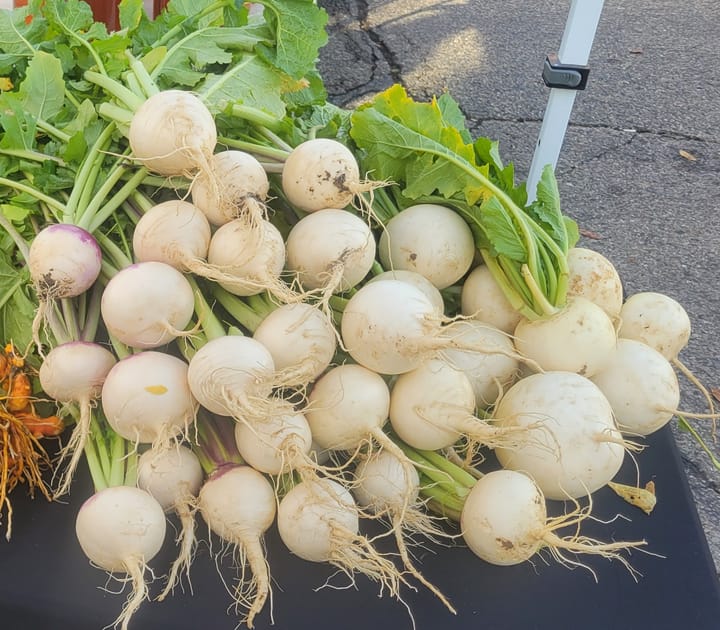Spring bulbs: A gift for your future self
Unless you live in a new development, I’m sure you have some daffodils that were planted decades ago and reliably emerge every spring. They didn’t get there on their own, someone planted them, and this year, that someone could be you!

By Kelsey Vance
I’m almost never done gardening, but in the fall, with less daylight and cooler temperatures, I do start to slow down like the plants and animals around me. Despite this slowdown, one fall task I never skip is planting bulbs for spring – it truly is a gift to your future self. Yes, you heard that right, this native-plant enthusiast plants flower bulbs originating from other continents. Bulbs are spring ephemerals which means they complete their life cycle in the spring when water and sunlight through the canopy is plentiful and then go dormant before the heat of the summer.
During their brief growth period they provide color and interest while the native wildflowers are still asleep, as well as nectar and pollen for the pollinators that have already emerged such as the beloved honeybee, which is also from Europe and Asia. Before we get into bulbs of European and Asian origin, let’s take a quick look at our native spring ephemerals.
To my knowledge, southwest Ohio is home to only one true spring bulb: Wild hyacinth (Camassia scilloides). If you’ve never seen them, there’s a healthy population at Governor Bebb Metro Park. They grow along the riverbank and bloom in May – it’s a stunning display. Wild hyacinth is a great addition to the perennial garden and bulbs are available from native plant nurseries and Dutch growers online.
Of course our area is home to many native spring ephemerals. From February to May, the spring wildflower show in Ohio is quite delightful, with something new blooming every few days like Dutchman’s breeches, spring beauties, Virginia blue bells, fawn and trout lilies and so many more. Adding native spring ephemerals to your landscape is an important component to supporting wildlife. Many of our native bee species are completely dependent on specific species of spring ephemeral flowers, meaning they can’t raise their young without pollen from a specific plant. So, having native spring ephemerals in your gardens helps support their life cycle. Many of those ephemerals can be purchased from native plant nurseries or started from seed. However, never dig them up from a natural area unless you have permission to do so, it’s called poaching and is illegal.
Spring bulbs like daffodils, tulips and hyacinths have been staples in gardening for centuries and for good reason too. They are a spot of bright color after the gray days of winter and many varieties are wonderfully fragrant. Unless you live in a new development, I’m sure you have some daffodils that were planted decades ago and reliably emerge every spring. They didn’t get there on their own, someone planted them, and this year, that someone could be you!
Planting bulbs in the fall is one of the easiest and most affordable garden tasks. The soil is soft from fall rains, the hole that needs to be dug is small and the temperatures are cooler. It’s a great time to be in the garden. Bulbs are generally inexpensive, depending on the variety and they are often on sale as it gets deeper into fall.
Spring bulbs do not have to be strictly relegated to the garden bed. Stinzenplantzen, or stinze plantings, are bulbs planted within your turf grass. It’s a gardening practice from the Netherlands utilizing small growing bulb varieties that have naturalizing tendencies, meaning they spread by seed and will return annually with little to no maintenance. (Disclaimer: I recommend this method and use of naturalizing bulbs for suburban and urban areas only to prevent escaped plants displacing the native spring ephemerals.) I have been adding small bulbs to my suburban front yard every year. It makes me incredibly happy every spring to see them poke through the turf grass or sometimes dusted with a spring snowfall.
Some of my favorite, well-behaved (meaning they won’t take over or outcompete anything), deer and rodent-proof varieties are rock garden irises (Iris reticulata), smaller daffodils and paperwhites (Narcissi sp.), Hyacinths, snow drops (Galanthus spp.), ornamental alliums, winter wind flower (Anemone blanda), glory-of-the-snow (Chionodoxa spp.), Spanish bluebells (Hyacinthoides spp.) and Siberian and Alpine squills (Scilla spp.).
I also love species tulips. These aren’t the big, flashy tulips that are planted like annuals everywhere. Species tulips are the more wild cousins of those garden favorites – they are smaller, more diverse, naturalize and are so cool looking. The varieties Tulipa clusiana, T. dasystemon and T. sylvestris stole my heart last spring – sorry they don’t have common names. Squirrels find the bulbs a bit tasty, so I put an iris or allium bulb in the hole as well to reduce predation as well as extend the window of blooms.
If this article has inspired you to dig in for early spring color, Shademakers Nursery on Collins Street in Oxford has plenty of bulb varieties remaining this fall. If you’re feeling really inspired and want to plant a few dozen or more, I highly recommend getting a bulb auger for a cordless drill, it makes for quick work. However many you decide to put in the ground, I know your future self will thank you.
Kelsey Vance is a Wild Ones Miami Valley board member and owner of Wild Edges Landscaping LLC.




